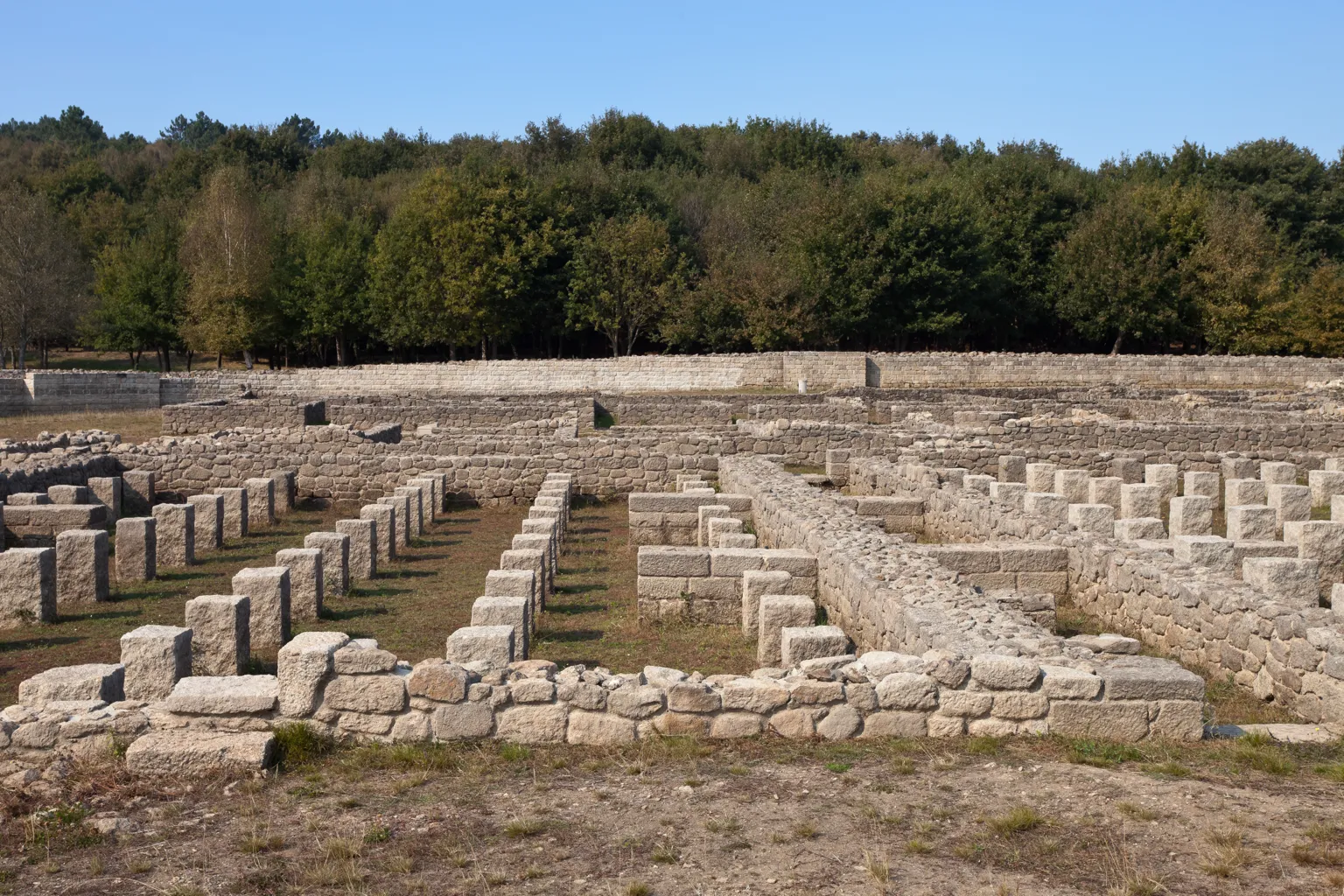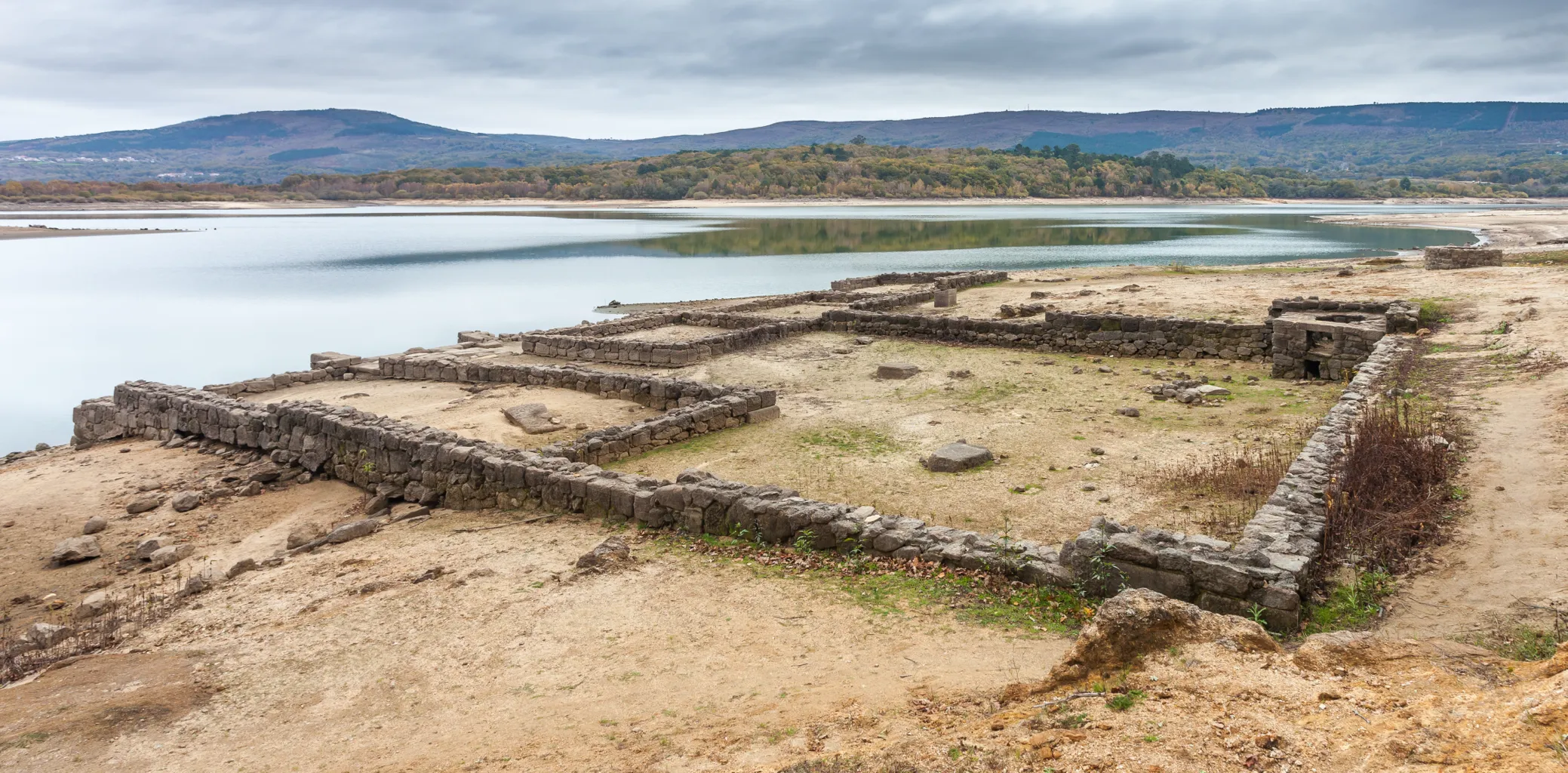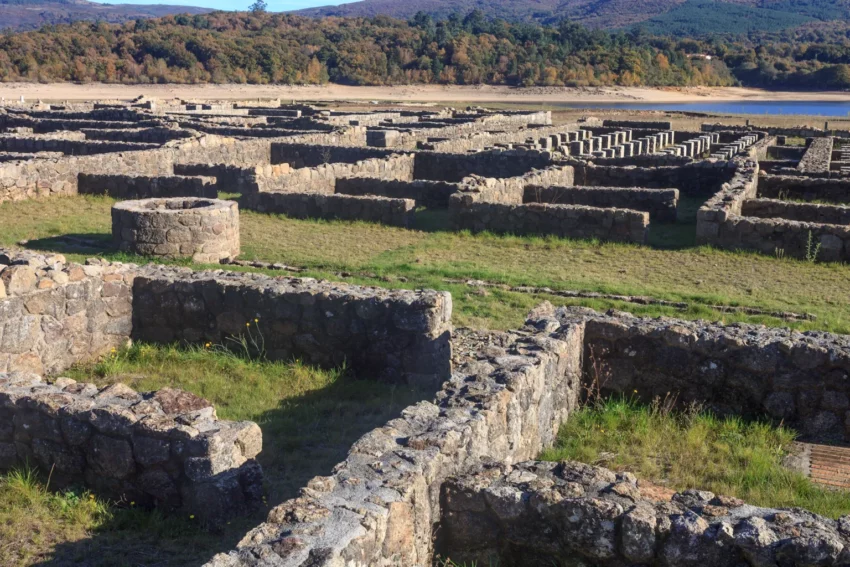Historical Background of Aquis Querquennis
Aquis Querquennis is a Roman fort located in Ourense Province, Galicia, Spain. It was constructed between 69-79 AD to accommodate soldiers tasked with building the Via XVIII, also known as Via Nova. This fort played a pivotal role until 120 AD, housing the Legio VII Gemina before their deployment to Dacia.
Get your dose of History via Email
Discovery and Excavations
The fort lay forgotten until the 1920s, when archaeologist Florentino López Cuevillas discovered and began excavating the site. However, in 1949, the construction of the As Conchas reservoir submerged the site. Since 1975, periods of low water have allowed for further excavations.

The Fort’s Structure and Purpose
Originally, Aquis Querquennis served as barracks for about 500 infantry and cavalry soldiers. These soldiers were part of the third cohort of the Legio VII Gemina, based in what is now León, Spain. The fort’s strategic location supported the Roman efforts to secure and manage the region.
Archaeological Findings
Recent excavations, especially since 1975, have revealed the fort’s extensive features, including a headquarters, two granaries, a hospital, five barracks, and a mansio for officials. Additionally, archaeologists have uncovered roads, drains, walls, towers, gates, and a perimeter road. Aerial photography in the 1980s helped expose the fort’s full 2.4 hectares.

Cultural Significance
The fort has gained local significance, known as “A cidá” or “the city,” indicating its importance in the region’s Roman military history. In 2018, it was designated a Bien de Interés Cultural. It also houses the Aquae Querquennae-Vía Nova Interpretation Center, a museum dedicated to the fort and the road.
Modern Discoveries
The site was fully exposed in August 2022 when the reservoir levels dropped to 49% of capacity. This event allowed for a complete view of the fort’s layout and a better understanding of its historical context.

Proximity to Roman Bathhouses
Aquis Querquennis is close to natural hot springs and Roman bathhouses at O Bano, highlighting the area’s rich Roman heritage and its continuing allure as a historical site.

Conclusion
Aquis Querquennis stands as a testament to the Roman military’s influence in Galicia, offering insights into ancient engineering, military strategy, and daily life in a Roman fort. Its ongoing excavation continues to provide valuable information about the Roman presence in the region.

